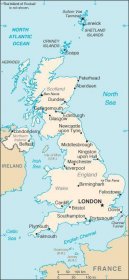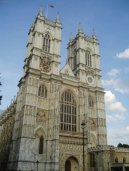United kingdom
United kingdom: Travel tips, articles, photos, gallery, cities database, population, pics, flags, statistics, free maps online
| Introduction - United Kingdom: | | Location - United Kingdom: | | People - United Kingdom: | | Government - United Kingdom: | Country name | conventional long form: United Kingdom of Great Britain and Northern Ireland; note - Great Britain includes England, Scotland, and Wales
conventional short form: United Kingdom
abbreviation: UK | | Government type | constitutional monarchy | | Capital | name: London
geographic coordinates: 51 30 N, 0 10 W
time difference: UTC 0 (5 hours ahead of Washington, DC during Standard Time)
daylight saving time: +1hr, begins last Sunday in March; ends last Sunday in October | | Dependent areas | Anguilla, Bermuda, British Indian Ocean Territory, British Virgin Islands, Cayman Islands, Falkland Islands, Gibraltar, Montserrat, Pitcairn Islands, Saint Helena, South Georgia and the South Sandwich Islands, Turks and Caicos Islands | | Administrative divisions | England: 47 boroughs, 36 counties, 29 London boroughs, 12 cities and boroughs, 10 districts, 12 cities, 3 royal boroughs
boroughs: Barnsley, Blackburn with Darwen, Blackpool, Bolton, Bournemouth, Bracknell Forest, Brighton and Hove, Bury, Calderdale, Darlington, Doncaster, Dudley, Gateshead, Halton, Hartlepool, Kirklees, Knowsley, Luton, Medway, Middlesbrough, Milton Keynes, North Tyneside, Oldham, Poole, Reading, Redcar and Cleveland, Rochdale, Rotherham, Sandwell, Sefton, Slough, Solihull, Southend-on-Sea, South Tyneside, St. Helens, Stockport, Stockton-on-Tees, Swindon, Tameside, Thurrock, Torbay, Trafford, Walsall, Warrington, Wigan, Wirral, Wolverhampton
counties (or unitary authorities): Bedfordshire, Buckinghamshire, Cambridgeshire, Cheshire, Cornwall, Cumbria, Derbyshire, Devon, Dorset, Durham, East Sussex, Essex, Gloucestershire, Hampshire, Herefordshire, Hertfordshire, Isle of Wight, Kent, Lancashire, Leicestershire, Lincolnshire, Norfolk, North Yorkshire, Northamptonshire, Northumberland, Nottinghamshire, Oxfordshire, Shropshire, Somerset, Staffordshire, Suffolk, Surrey, Warwickshire, West Sussex, Wiltshire, Worcestershire
London boroughs: Barking and Dagenham, Barnet, Bexley, Brent, Bromley, Camden, Croydon, Ealing, Enfield, Greenwich, Hackney, Hammersmith and Fulham, Haringey, Harrow, Havering, Hillingdon, Hounslow, Islington, Lambeth, Lewisham, Merton, Newham, Redbridge, Richmond upon Thames, Southwark, Sutton, Tower Hamlets, Waltham Forest, Wandsworth
cities and boroughs: Birmingham, Bradford, Coventry, Leeds, Liverpool, Manchester, Newcastle upon Tyne, Salford, Sheffield, Sunderland, Wakefield, Westminster
districts: Bath and North East Somerset, East Riding of Yorkshire, North East Lincolnshire, North Lincolnshire, North Somerset, Rutland, South Gloucestershire, Telford and Wrekin, West Berkshire, Wokingham
cities: City of Bristol, Derby, City of Kingston upon Hull, Leicester, City of London, Nottingham, Peterborough, Plymouth, Portsmouth, Southampton, Stoke-on-Trent, York
royal boroughs: Kensington and Chelsea, Kingston upon Thames, Windsor and Maidenhead
Northern Ireland: 24 districts, 2 cities, 6 counties (historic)
districts: Antrim, Ards, Armagh, Ballymena, Ballymoney, Banbridge, Carrickfergus, Castlereagh, Coleraine, Cookstown, Craigavon, Down, Dungannon, Fermanagh, Larne, Limavady, Lisburn, Magherafelt, Moyle, Newry and Mourne, Newtownabbey, North Down, Omagh, Strabane
cities: Belfast, Londonderry (Derry)
counties (historic): County Antrim, County Armagh, County Down, County Fermanagh, County Londonderry, and County Tyrone are still referred to in common parlance, but do not constitute a level of administration
Scotland: 32 council areas: Aberdeen City, Aberdeenshire, Angus, Argyll and Bute, Clackmannanshire, Dumfries and Galloway, Dundee City, East Ayrshire, East Dunbartonshire, East Lothian, East Renfrewshire, City of Edinburgh, Eilean Siar (Western Isles), Falkirk, Fife, Glasgow City, Highland, Inverclyde, Midlothian, Moray, North Ayrshire, North Lanarkshire, Orkney Islands, Perth and Kinross, Renfrewshire, Shetland Islands, South Ayrshire, South Lanarkshire, Stirling, The Scottish Borders, West Dunbartonshire, West Lothian
Wales: 11 county boroughs, 9 counties, 2 cities and counties
county boroughs: Blaenau Gwent, Bridgend, Caerphilly, Conwy, Gwynedd, Merthyr Tydfil, Neath Port Talbot, Newport, Rhondda Cynon Taff, Torfaen, Wrexham
counties: Carmarthenshire, Ceredigion, Denbighshire, Flintshire, Isle of Anglesey, Monmouthshire, Pembrokeshire, Powys, The Vale of Glamorgan
cities and counties: Cardiff, Swansea | | Independence | England has existed as a unified entity since the 10th century; the union between England and Wales, begun in 1284 with the Statute of Rhuddlan, was not formalized until 1536 with an Act of Union; in another Act of Union in 1707, England and Scotland agreed to permanently join as Great Britain; the legislative union of Great Britain and Ireland was implemented in 1801, with the adoption of the name the United Kingdom of Great Britain and Ireland; the Anglo-Irish treaty of 1921 formalized a partition of Ireland; six northern Irish counties remained part of the United Kingdom as Northern Ireland and the current name of the country, the United Kingdom of Great Britain and Northern Ireland, was adopted in 1927 | | National holiday | the UK does not celebrate one particular national holiday | | Constitution | unwritten; partly statutes, partly common law and practice | | Legal system | based on common law tradition with early Roman and modern continental influences; has nonbinding judicial review of Acts of Parliament under the Human Rights Act of 1998; accepts compulsory ICJ jurisdiction, with reservations | | Suffrage | 18 years of age; universal | | Executive branch | chief of state: Queen ELIZABETH II (since 6 February 1952); Heir Apparent Prince CHARLES (son of the queen, born 14 November 1948)
head of government: Prime Minister Gordon BROWN (since 27 June 2007)
cabinet: Cabinet of Ministers appointed by the prime minister
elections: none; the monarchy is hereditary; following legislative elections, the leader of the majority party or the leader of the majority coalition is usually the prime minister | | Legislative branch | bicameral Parliament consists of House of Lords (618 seats; consisting of approximately 500 life peers, 92 hereditary peers, and 26 clergy) and House of Commons (646 seats since 2005 elections; members are elected by popular vote to serve five-year terms unless the House is dissolved earlier)
elections: House of Lords - no elections (note - in 1999, as provided by the House of Lords Act, elections were held in the House of Lords to determine the 92 hereditary peers who would remain there; elections are held only as vacancies in the hereditary peerage arise); House of Commons - last held 5 May 2005 (next to be held by May 2010)
election results: House of Commons - percent of vote by party - Labor 35.2%, Conservative 32.3%, Liberal Democrats 22%, other 10.5%; seats by party - Labor 356, Conservative 197, Liberal Democrat 62, other 31; seats by party in the House of Commons as of 26 June 2007 - Labor 353, Conservative 195, Liberal Democrat 63, Scottish National Party/Plaid Cymru 9, Democratic Unionist 9, Sinn Fein 5, other 12
note: in 1998 elections were held for a Northern Ireland Assembly (because of unresolved disputes among existing parties, the transfer of power from London to Northern Ireland came only at the end of 1999 and has been suspended four times, the latest occurring in October 2002 and lasting until 8 May 2007); in 1999, there were elections for a Scottish Parliament and a Welsh Assembly | | Judicial branch | House of Lords (highest court of appeal; several Lords of Appeal in Ordinary are appointed by the monarch for life); Supreme Courts of England, Wales, and Northern Ireland (comprising the Courts of Appeal, the High Courts of Justice, and the Crown Courts); Scotlands Court of Session and Court of the Justiciary | | Political parties and leaders | Conservative and Unionist Party [David CAMERON]; Democratic Unionist Party (Northern Ireland) [Rev. Ian PAISLEY]; Labor Party [Gordon BROWN]; Liberal Democrats [Sir Menzies CAMPBELL]; Party of Wales (Plaid Cymru) [Ieuan Wyn JONES]; Scottish National Party or SNP [Alex SALMOND]; Sinn Fein (Northern Ireland) [Gerry ADAMS]; Social Democratic and Labor Party or SDLP (Northern Ireland) [Mark DURKAN]; Ulster Unionist Party (Northern Ireland) [Sir Reg EMPEY] | | Political pressure groups and leaders | Campaign for Nuclear Disarmament; Confederation of British Industry; National Farmers Union; Trades Union Congress | | International organization participation | AfDB, Arctic Council (observer), AsDB, Australia Group, BIS, C, CBSS (observer), CDB, CE, CERN, EAPC, EBRD, EIB, ESA, EU, FAO, G-5, G-7, G-8, G-10, IADB, IAEA, IBRD, ICAO, ICC, ICCt, ICRM, IDA, IEA, IFAD, IFC, IFRCS, IHO, ILO, IMF, IMO, IMSO, Interpol, IOC, IOM, IPU, ISO, ITSO, ITU, MIGA, MONUC, NATO, NEA, NSG, OAS (observer), OECD, OPCW, OSCE, Paris Club, PCA, PIF (partner), SECI (observer), UN, UN Security Council, UNCTAD, UNESCO, UNFICYP, UNHCR, UNIDO, UNMIL, UNMIS, UNMOVIC, UNOMIG, UNRWA, UNWTO, UPU, WCO, WEU, WHO, WIPO, WMO, WTO, ZC | | Diplomatic representation in the us | chief of mission: Ambassador David G. MANNING; note - will be replaced by Sir Nigel E. SHEINWALD in the autumn of 2007
chancery: 3100 Massachusetts Avenue NW, Washington, DC 20008
telephone: [1] (202) 588-6500
FAX: [1] (202) 588-7870
consulate(s) general: Atlanta, Boston, Chicago, Houston, Los Angeles, New York, San Francisco
consulate(s): Dallas, Denver, Miami, Orlando | | Diplomatic representation from the us | chief of mission: Ambassador Robert Holmes TUTTLE
embassy: 24 Grosvenor Square, London, W1A 1AE
mailing address: PSC 801, Box 40, FPO AE 09498-4040
telephone: [44] (0) 20 7499-9000
FAX: [44] (0) 20 7629-9124
consulate(s) general: Belfast, Edinburgh | | Flag description | blue field with the red cross of Saint George (patron saint of England) edged in white superimposed on the diagonal red cross of Saint Patrick (patron saint of Ireland), which is superimposed on the diagonal white cross of Saint Andrew (patron saint of Scotland); properly known as the Union Flag, but commonly called the Union Jack; the design and colors (especially the Blue Ensign) have been the basis for a number of other flags including other Commonwealth countries and their constituent states or provinces, and British overseas territories | |
| Economy - United Kingdom: | | Communications - United Kingdom: | | Transportation - United Kingdom: | | Military - United Kingdom: |
This page was last updated on 16 September, 2007
Source: CIA >>> |




